Free printable food log template to keep track of food, water, exercise, weight, fruit, and vegetables. To create a printable food journal, print multiple copies of any of the templates. You can also mix and match colors and styles.
Free Food Diary Template
Track Food and Nutrition information (Calories, Carbs, Sugar, Fat, and Protein)
Food Logs for Specific Diets
If you are tracking points, carbs, calories, or any macro then these are the food logs for you. If you are vegan, then they will help you track your protein intake.
Intermittent Fasting
Keto Tracker Food Log
This Keto diet tracker printable will track your food intake and your net carb intake. The Excel spreadsheet will automatically calculate and view net carbs (total number of carbs each day) and total carbs.
If you are on a low-carb diet then use this template to track your carbs.
Weight Watchers
The Weight Watchers points spreadsheet will track your points and calculate your daily total.
Track Calories
Track your daily calorie intake with these templates. If you want an automatic calorie tracker then use the Excel spreadsheet which will automatically calculate your calorie intake. This version includes the service size (you might need a food scale to calculate this).
You can use these meal plans to plan your meals ahead of time and then make adjustments if necessary (if you don’t eat according to the meal plan).
Select any food diary template from the selection below. This free printable food journal template is available in six different colors. You can mix and match or print them all to create your own free food journal. There are more designs and templates below.
This food log shows a week at a glance. This helps you see your daily progress.
A food journal is an important tool in weight loss. It not only helps you record what you eat but also how you felt. If you are an emotional eater, then you can record how you were feeling if you overate and what happened prior to binges. It helps you get to know yourself and prevent binge eating in the future.
If you are tracking your food intake to lose weight, then check out the following printables:
- Meal Plan Template
- Weight Loss Tracker (which will also track activity and workout sessions)
- Weight Loss Bullet Journal
Bullet Journal Food Log
This is a food log bullet journal style with cute doodles and a dot grid background.
You can create a food tracker bullet journal devoted entirely to what you eat, a food journal section in your notebook, or just add a few spreads whenever you need them. You can also just add a food log to your daily spread.
Daily Food Log Template Excel
If you want a food tracking chart in Excel format, see the options above.
Emotional Eating Food Log
This mindful eating food log will help you develop mindfulness and to be more aware when you eat. Before you eat, you fill out how hungry you are (rate your hunger on a scale of 1-6). Then, you record what you ate.
Why did you eat? Were you truly hungry or were you stressed or bored? This will help you pinpoint the triggers that cause you to eat. How did you eat? Did you eat quickly without paying attention to what you ate or did you eat mindfully? After you eat, you fill out how full you are. If you keep using this food journal you will become more aware of when and why you eat.
How did you feel after you ate? When you binge on junk food you tend to feel bloated and unhappy. When you eat a healthy meal you feel good and nourished. When you spend a moment to describe how you feel after you eat and record how you feel it might help you make better choices in the future. Describe your emotions and feelings.
See our free intuitive eating journal and workbook.
Food Journal to Detect Food Intolerances and Sensitivities
Image | Word | Editable PDF
One of the benefits of a food journal is to detect food intolerances and sensitivities. The best way to identify food intolerances and sensitivities is with an elimination diet. You refrain from eating all foods known to cause food intolerances for 2-3 weeks (the elimination phase) and then you introduce them one by one (reintroduction phase). The most common culprits for food allergy and intolerance are: citrus, dairy products, eggs, gluten, soy, peanuts, shellfish, tree nuts, beef, and corn (source).
When you do introduce them to your diet again, you check for symptoms and write them down in your food sensitivity journal (see above). When you reintroduce a food group, look out for symptoms for a period of 2 to 3 days. Symptoms can include (headaches, fatigue, bloating, stomach pain, or changes in bowel habits). If you don’t experience any symptoms then start reintroducing the next food group.
You should of course only try an elimination diet under the supervision of your doctor. I am not trying to promote the diet but to provide a food journal for those who have been advised to try an elimination diet.
Printable Food Journal Template
A food journal is more than just a food log. It doesn’t only record what you ate but why you ate. Food is supposed to be fuel to eat when we are hungry. However, emotional eating often eats for other reasons such as when they are happy or sad, depressed, or lonely. Since I am an emotional eater I like to keep a food journal where I record what I eat and how I felt prior to overeating. If I am not sure how I felt, I like to journal about what happened before I ate more than I should. Analyzing the situation often helps me to understand what I was feeling. This is helpful to prevent overeating in the future and to understand what I am feeling in order to address those feelings in ways unconnected to food. It’s not easy but a food journal is an important tool that can be very helpful.
To create a food journal, download any food diary template free of charge (from the selection above). Print multiple copies of it. Put it in a binder or have it bound to create a journal.
How to Create a Printable Food Journal
Either select one of the ready-made templates on this page or create your own with our free bullet journal app. With the free app, you can section the page or select a table. You can add text, doodles, titles, etc. If you want to leave space to journal about what and why you ate then you have more flexibility than with a ready-made template.
What is a food log template?
A food log template is a food journal that you can use to keep track of what you plan to eat and what you actually eat. If your goal is weight loss, then you might want to select a template that includes how much water you drink, how many fruits and vegetables you eat a day and how much sport you do each week. You can use a blank template to record what you eat as you eat it or you can use a meal tracker template that divides the food you eat into three meals and snacks in between meals.
Why use a food log?
A food log enables you to ensure that your diet is balanced. If you keep track of your food each day you can ensure that you are eating carbohydrates, protein, healthy fats, fruit, and vegetables, etc. When I don’t keep track of my food I tend to consume mainly carbohydrates. When I plan my diet then it is almost always more balanced.
Keeping a food log journal will enable you to count calories or points or to just keep track of how much you are eating to lose weight, gain weight, or maintain your weight depending on your goals. When I track my food intake, I always eat less than when I don’t. I don’t even realize how many calories I consume when I don’t use a food journal. If mindless eating is a problem for you too then keeping a food log can be very helpful.
When you have a “food intolerance”, keeping a food log journal can help you recall what you ate before your symptoms occurred and it can help you find patterns to help you detect which food is causing you discomfort.
If you go for expert guidance (to a registered dietitian or a trainer) they will probably ask you to write down what you eat for a few days before you meet the first time. This will give them an idea of what your current eating habits are like, the portion size you are used to eating, etc. Once they provide you with an eating plan they might still ask you to keep a food log. If you don’t reach the custom goals that they set for your then they might take a closer look at your food log for nutrition insights into why you are not reaching your goals. They might give you tips on making smarter choices or set macro goals and track micronutrients.
Keeping track of your progress will also provide motivation.
Why keep track of water intake?
I don’t know about you, but I don’t drink enough. When I don’t drink enough, I always eat more than when I do. Besides all the benefits you get from drinking water, you might also eat less. I know that I do. Some of the food tracker template options include a section for your water intake as well. If you want a dedicated water tracker, then please see our water tracker printables.
How do you use the food template?
You are free to use it any way that you want but I like to fill out my planned menu in pencil in the morning, the day before or at the beginning of the week, and then make changes according to my actual food intake. This works for me but you are free to use it any way you find helpful. The goal is to stick to the diet or lifestyle that you plan.
When we eat without keeping track of what we are eating, we often consume more calories than we think we consumed.
How to print?
Select any free food diary printable from the selection above. Click on it to open the printable. Save to your PC or print from your browser.
How to create a food log PDF?
You can download the printables in the bullet journal section as PDF files. Click on download and then select the PDF option.
You can create your own food diary template that can be used for months. Print a few copies of any of the templates above. Create a binder cover. Place the binder cover on top of the food logs and have them bound or just put them in a binder. Looking back at your past food diaries can help you see which lifestyle changes are working and which are not. It is a great way to prioritize your health and make sure you are providing your body with nutritious food. Studies have shown that when we record our daily food intake, then we do not eat as much.
Online Food Diary
If you prefer a digital food diary or food journal app, then there are many options available both free and premium.
MyFitnessPal
I personally love MyFitnessPal (this is not an affiliate link) and I think it is the best food diary app. It has a free and premium version and the free version is great.
You can use it on numerous devices and it has a huge food database (I think it is the biggest food database but I could be wrong). It also has a barcode scanner with which you can scan your food’s label and it will automatically be entered into your food log if the food is in their database. If it isn’t, you can add it to their database. You can also enter recipes with an ingredient list. Each time you eat that food the entire ingredient list will be added to your food diary. They have a great online community with interesting forums and an option to write your own blog or journal. You can keep your journal private or publish it if you don’t mind sharing.
There is also a section to add your fitness goals and to log your exercise. You can connect your account with your fitness tracker (such as Fitbit, Garmin, Runkeeper, etc) and your exercise is automatically imported into your account which I love.
Your dashboard shows how many calories you have left for the day, how much weight you have lost in total, news feeds from your friends in the My Fitness Pal community, and a button to quickly add food or exercise. Another thing I love is the day tracker that shows how long you have been tracking your food intake. You don’t want to break your streak which motivates you to keep tracking.
There is also a premium version (which I haven’t tried). MyFitnessPal claims that premium members are 65% more likely to reach their weight loss goal. The premium version has a macro tracker that the free version doesn’t have. You can track your carbs, fat protein breakdown. If you track macronutrients, then it might be worth it for you to try their free 30-day premium trial to see if it is worth it for your specific needs.
They offer healthy recipes, interesting articles, endless inspiration, and easy logging tools.
Noom
Whereas MyFitnessPal is free, Noom isn’t. I personally didn’t like the Noom food log nearly as much as I like MyFitnessPal so since it isn’t free and not as good, in my opinion, I don’t recommend it.
See the Noom Food List

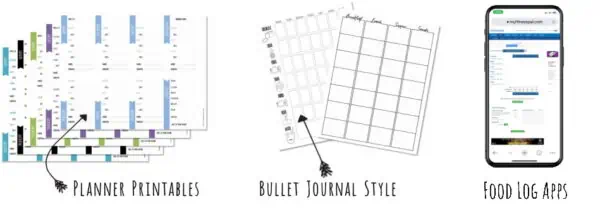
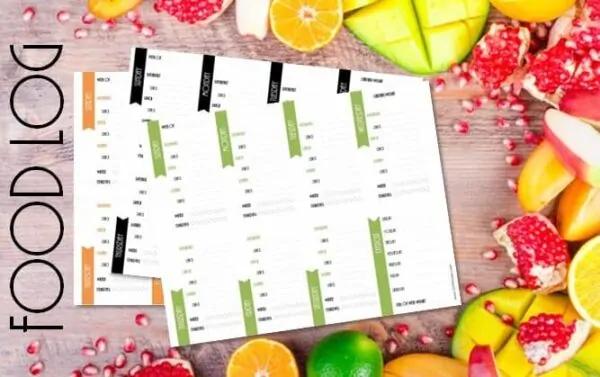
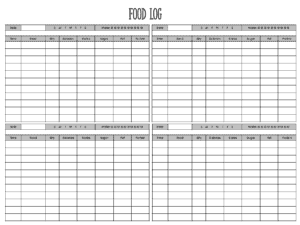
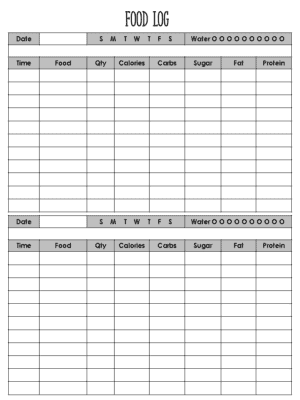


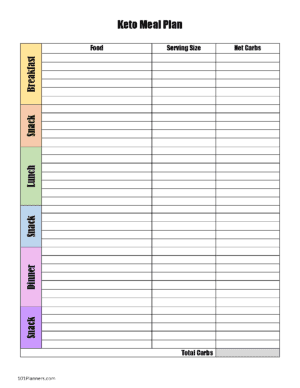
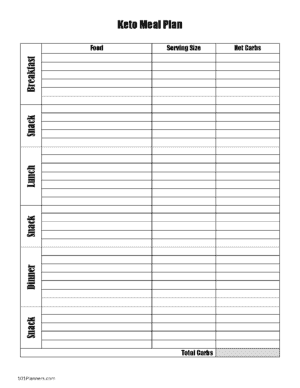
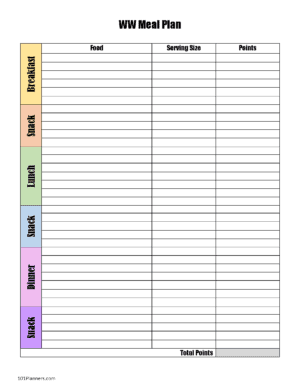
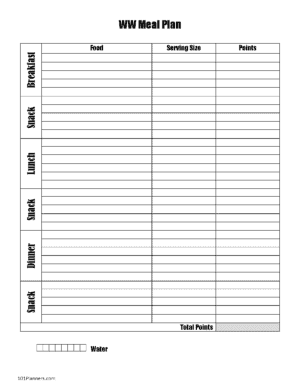
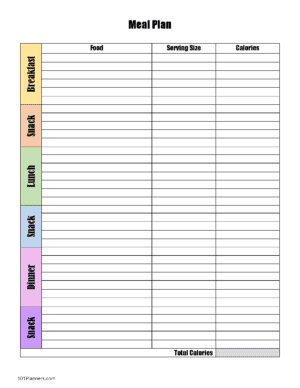
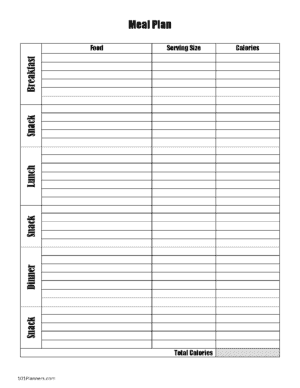
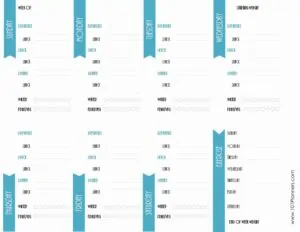
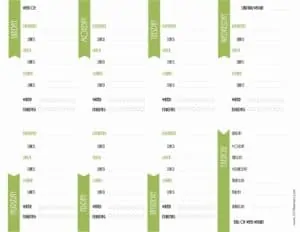
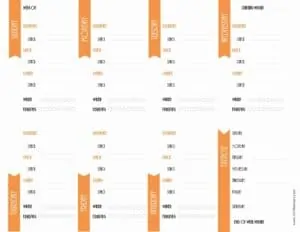
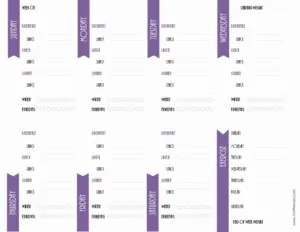
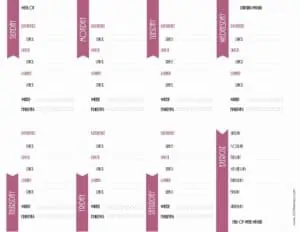
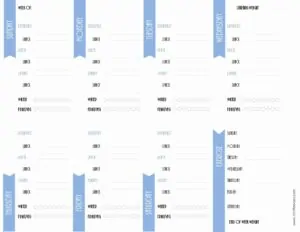
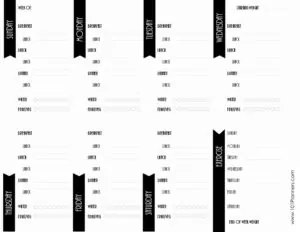
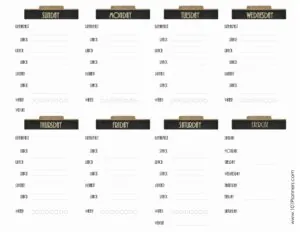
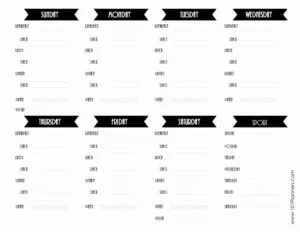
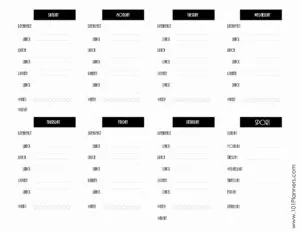
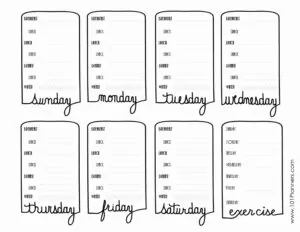
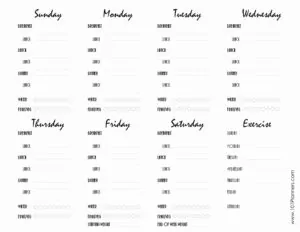
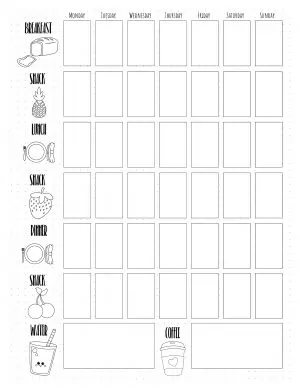
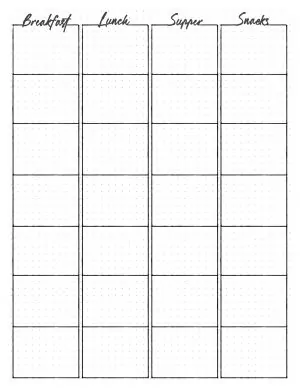
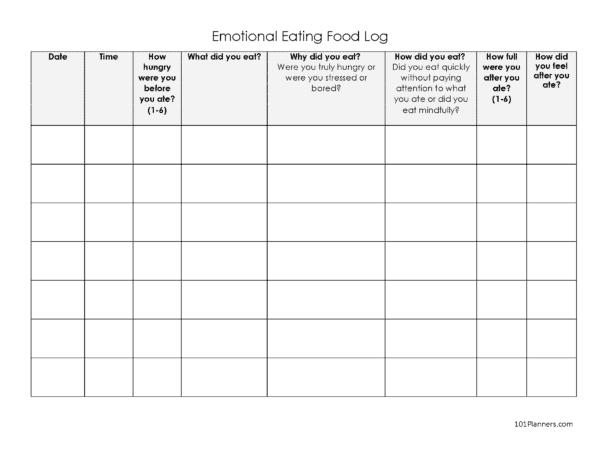
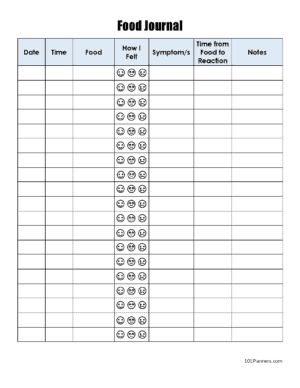
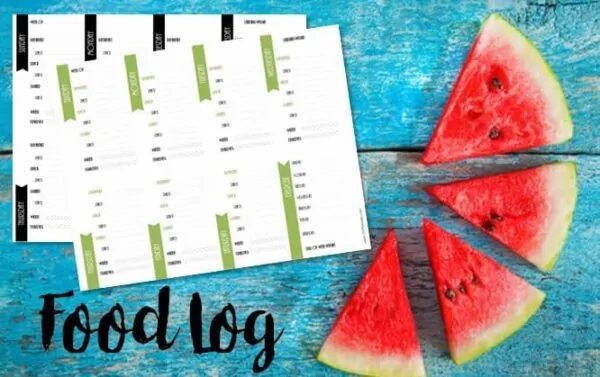
 My name is
My name is